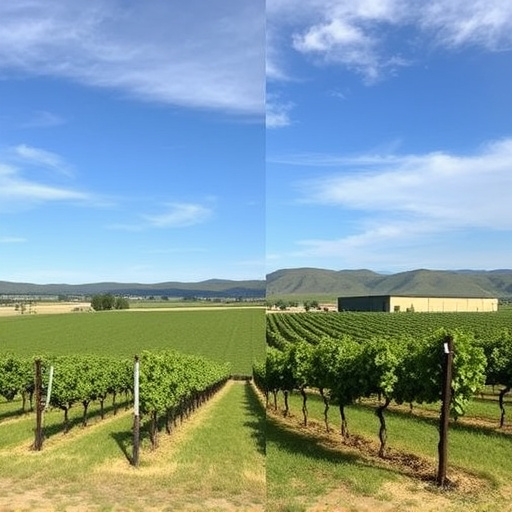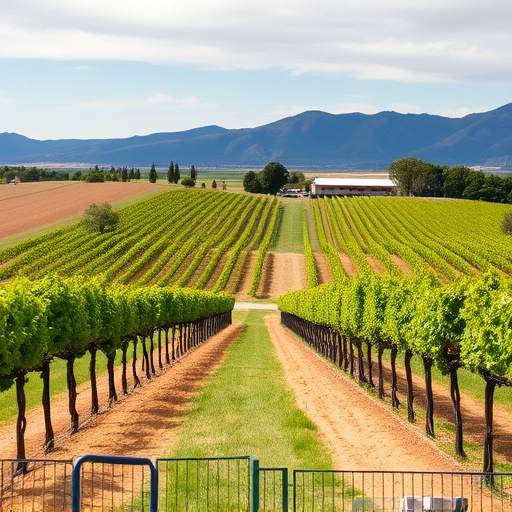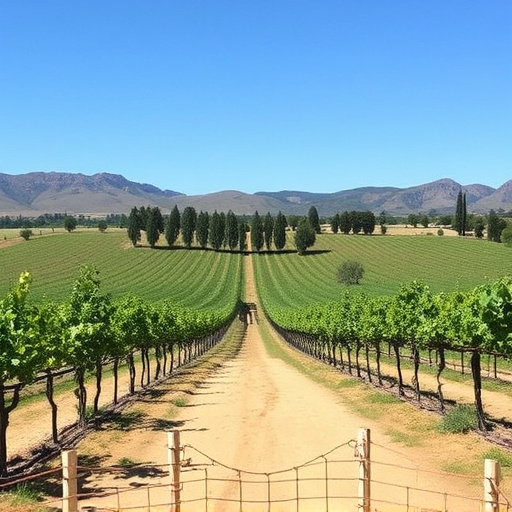Nestled in Arizona's Sonoran Desert, Sonoita is renowned for its high-elevation viniculture. With unique microclimates and volcanic soils, the region produces distinct wines ranging from robust reds to crisp whites. At elevations over 3,000 feet, cooler temperatures slow grape ripening, enhancing acidity and complex flavors. Exploring neighboring estates offers a diverse wine experience, showcasing traditional and innovative winemaking techniques. Sonoita vineyards, with their varied terrain and soil types, create unique terroir expressions, making it a top destination for global oenophiles.
“Discover the enchanting world of high-elevation wines in Sonoita, a true paradise for wine enthusiasts. Known for its unique terroir, this Arizona region boasts neighboring estates producing remarkable varietals. Our journey delves into the art of viniculture at these elevated heights, exploring how climate and terrain shape distinct flavors. From rich reds to crisp whites, this comparative analysis uncovers the best Sonoita vineyards, offering a guide for wine lovers seeking exceptional sips.”
- Understanding Sonoita: A Wine Lover's Paradise
- The Art of High Elevation Viniculture
- Exploring Neighboring Wine Estates
- Tasting Notes: Unveiling Unique Flavors
- The Impact of Terrain and Climate
- Choosing the Best: A Comparative Analysis
Understanding Sonoita: A Wine Lover's Paradise

Sonoita, nestled in the heart of Arizona’s Sonoran Desert, is a hidden gem for wine enthusiasts. This charming town is renowned for its picturesque vineyards that thrive amidst dramatic mountain ranges and lush valleys. The unique microclimate, characterized by sunny days and cool nights, creates optimal conditions for grape cultivation, resulting in a diverse range of high-elevation wines.
The area’s volcanic soils and abundant sunshine contribute to the distinct flavors and aromas found in Sonoita’s wines. Local vineyards have embraced sustainable farming practices, allowing them to produce award-winning vintages that showcase the region’s terroir. From robust reds to crisp whites, Sonoita offers a delightful variety for wine lovers seeking authentic and captivating experiences. Explore these neighboring estates to uncover the secrets of Sonoita’s vibrant wine culture and indulge in the exceptional tastes that make it a top destination for oenophiles worldwide.
The Art of High Elevation Viniculture

The art of high elevation viniculture flourishes in Sonoita, a region renowned for its distinct terroir and thriving vineyards. At elevations often exceeding 3,000 feet, Sonoita’s estates present unique challenges and opportunities for winemakers. Cooler temperatures at these heights slow down grape ripening, allowing for a longer growing season and the development of complex flavors. The resulting wines showcase remarkable character, with vibrant acidity and nuanced aromas that reflect the specific microclimates and soil types of each vineyard.
Winemakers in Sonoita have mastered the art of harnessing these conditions to produce wines that stand out for their balance and elegance. Each estate has its own approach, from meticulous canopy management to selective harvesting techniques, all aimed at capturing the essence of their high-elevation vines. This dedication ensures that the vibrant spirits of the land are bottled, creating a diverse and captivating range of Sonoita vineyards wines that delight palates worldwide.
Exploring Neighboring Wine Estates

Exploring neighboring wine estates in Sonoita offers a unique opportunity to compare and contrast high-elevation wines. The region’s diverse microclimates and varying soil compositions create distinct terroirs, which translate into varied flavor profiles for the grapes grown there. By visiting multiple estates, wine enthusiasts can gain a deeper understanding of how these factors influence the final product.
Each estate has its own unique story to tell, from the traditional methods employed in viticulture to the innovative techniques used in winemaking. Tourists can expect to find a range of experiences, from quaint family-owned operations with charming rustic charm to larger establishments boasting state-of-the-art facilities. Regardless of size, these neighboring Sonoita vineyards provide a rich and immersive look into the art of wine production at high elevations.
Tasting Notes: Unveiling Unique Flavors
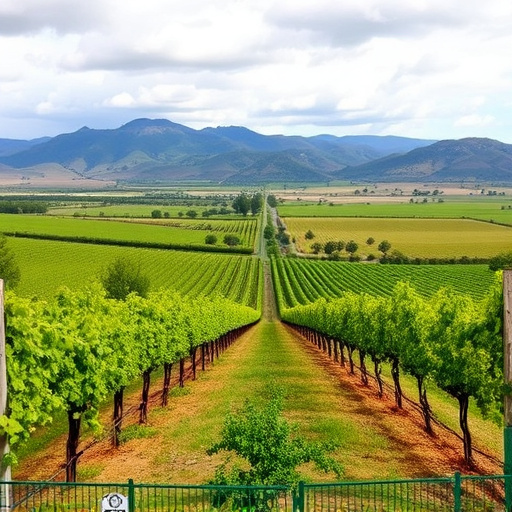
Tasting notes reveal a captivating journey through the unique flavors that each Sonoita vineyard offers. As winemakers harness the benefits of high elevation, distinct characteristics emerge in the final product. These wines often showcase vibrant acidity, balanced tannins, and aromatic profiles that are both complex and intriguing. Notes of citrus, berry compote, and herbal hints dance on the palate, leaving a refreshing and memorable impression.
Each estate brings its own terroir to the table, resulting in wines with individual personalities. Some may exhibit flavors of wildflower honey, stone fruits, or subtle notes of spice, while others surprise with earthy undertones and a hint of mineral-rich depth. These variations make for an exciting exploration, allowing wine enthusiasts to uncover hidden gems within Sonoita’s vibrant vineyards.
The Impact of Terrain and Climate

The unique terrain and climate of Sonoita vineyards play a pivotal role in shaping the characteristics of high-elevation wines produced in the region. At elevations typically exceeding 2,000 feet, these vineyards experience distinct microclimates that influence both grape ripening and flavor development. Cooler temperatures at higher altitudes slow down sugar accumulation, allowing for a longer growing season and preserving acidity. This balance is particularly notable in reds, where the slower ripening process contributes to more complex aromas and flavors.
The varied terrain adds another layer of complexity. Sloping hillsides, rocky outcrops, and diverse soil types expose grapes to varying levels of sunlight and nutrient availability. These variations result in distinct terroir expressions within even the closest of neighboring estates. For wine enthusiasts, exploring these high-elevation Sonoita vineyards offers a unique opportunity to uncover the subtle yet significant impacts of terrain and climate on the final product, creating a rich and diverse wine experience.
Choosing the Best: A Comparative Analysis
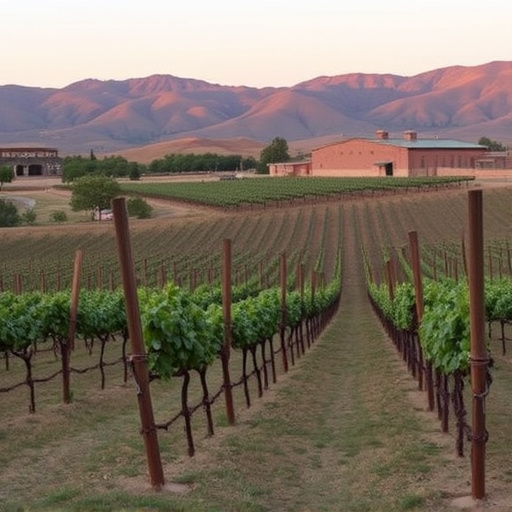
When comparing high-elevation wines from neighboring Sonoita estates, a crucial factor in choosing the best is understanding each vineyard’s unique microclimate and soil composition. Sonoita, nestled in Arizona’s Santa Catalina Mountains, boasts diverse elevations, with some vineyards reaching over 5,000 feet above sea level. This dramatic altitude significantly influences grape ripening and flavor profiles.
Wines from higher elevations tend to exhibit brighter acidity, stronger tannins, and more concentrated flavors due to the cooler temperatures. Conversely, lower-elevation wines often present softer, rounder textures with a slightly warmer climate’s influence on fruit development. A comparative analysis of these characteristics allows wine enthusiasts and sommeliers to select the most appealing bottle, highlighting the distinct character each Sonoita vineyard contributes to the region’s rich viticultural landscape.
Sonoita vineyards, nestled in the breathtaking Arizona high country, offer a unique wine experience. This article has explored the art of viniculture at high elevations and delved into the neighboring estates that make this region a true paradise for wine lovers. By examining the impact of terrain and climate, we’ve discovered how these factors contribute to the distinct flavors of each estate. Through comparative analysis, it’s clear that Sonoita vineyards produce exceptional wines, with unique characteristics that reflect their specific microclimates. Whether you’re a connoisseur or just starting your wine journey, exploring these neighboring estates is a must, as it allows you to truly appreciate the diversity and excellence of Sonoita’s wine offerings.
